

Melulater: Search results for Modelling book. Modelling Books were not around when I began my training to become a teacher.
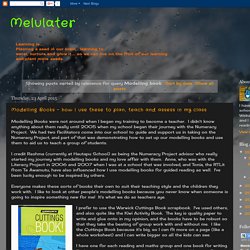
I didn't know anything about them really until 2005 when my school began their journey with the Numeracy Project. We had two facilitators come into our school to guide and support us in taking on the Numeracy Project, and part of that was demonstrating how to set up our modelling books and use them to aid us to teach a group of students. I credit Reshma (currently at Hautapu School) as being the Numeracy Project advisor who really started my journey with modelling books and my love affair with them. Anne, who was with the Literacy Project in 2006 and 2007 when I was at a school that was involved, and Tonia, the RTLit from Te Awamutu, have also influenced how I use modelling books for guided reading as well. I've been lucky enough to be inspired by others. Everyone makes these sorts of books their own to suit their teaching style and the children they work with.
Reading: 21 Reading Strategies And Activities All Teachers Should Know. One of the most popular topics here on Top Notch Teaching is that of teaching children to read.
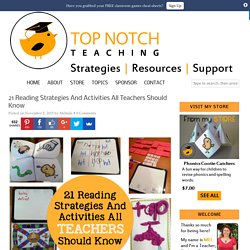
It’s also an area that I’m passionate about. We’ve published plenty of posts on the topic over the years but to help you find them we’ve pulled together 21 of the most popular reading strategies and activities and listed them below. 1. How To Teach Children To Read – This was the beginning of a fascinating journey for me and helped me to reassess my whole approach to teaching children to read. 2. 3. 4. Māori Words and Phrases - Māori Language.net. 100 Good Books to Read: Book Recommendations by Topic. Thinking tools. Professional Development. Te Kete Ipurangi Navigation: Te Kete Ipurangi Communities Schools.

Marking resources for e-asTTle writing / Teacher resources / Home - e-asTTle. Teachers can find many resources to assist them with marking e-asTTle writing.
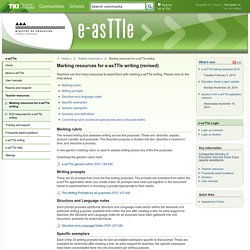
Please click on the links below. Marking rubric The revised writing tool assesses writing across five purposes. These are: describe, explain, recount, narrate, and persuade. The Describe purpose is divided into two: describe a moment in time, and describe a process. Homepage - Te Kete Ipurangi (TKI) Home - Sounds and Words. Keeping Ourselves Safe (for years 0–3) Keeping Ourselves Safe is a child protection programme in which children and young people learn and apply a range of safety skills that they can use when interacting with others.
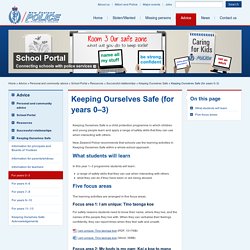
New Zealand Police recommends that schools use the learning activities in Keeping Ourselves Safe within a whole-school approach. What students will learn In this year 1–3 programme students will learn: a range of safety skills that they can use when interacting with others what they can do if they have been or are being abused. Five focus areas The learning activities are arranged in five focus areas. Focus area 1: I am unique: Tino taonga koe. Planning Sheets. Resource Finder. Teaching jobs UK, teacher jobs in the UK - Home Page - Protocol Education. Shared reading / ELP Years 1-4 / Comprehension / Reading / Reviewed resources.
Shared reading is an essential component of the daily literacy programme.
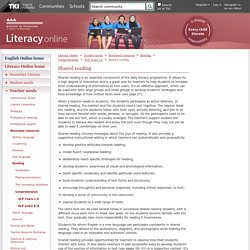
It allows for a high degree of interaction and is a great way for teachers to help students to increase their understanding of themselves as text users. It’s an effective approach, which can be used with both large groups and small groups to develop students’ strategies and their knowledge of how written texts work (see page 27). When a teacher reads to students, the students participate as active listeners. In shared reading, the teacher and the students read a text together. The teacher leads the reading, and the students follow with their eyes, actively listening, and join in as they become familiar with words, phrases, or concepts.
Shared reading conveys messages about the joys of reading. Teach Me To Teach. Assessment Resource Banks. Home - Sounds and Words. Lesson Zone NZ. Learning Adventures with Mrs. Gerlach: Motivational Magic! Useful language for the classroom / Teachers' notes / Homepage - He reo tupu, he reo ora. 5 Things to Consider When Setting Up Your Classroom. It’s tempting to dive right in and start organizing and decorating.

But before you open your first pack of sticky tack, take some time to figure out what your daily schedule is going to look like. For each part of the day, ask yourself the following questions: Taking these factors into consideration will help you immensely in your room arrangement! You’ll be able to figure out where your large group rug or area will need to be (in relation to interactive white boards, dry erase boards, bulletin boards, etc.). You’ll also know where to put your small group table so that you can still supervise students who are working independently. 2. Kids need to take ownership of their classroom. Having bare walls might feel strange at first. 13 Education Technology Tools Every Teacher Should Know About.
Technology and education are pretty intertwined these days and nearly every teacher has a few favorite Education Technology Tools tools that make doing his or her job and connecting with students a little bit easier and more fun for all involved.
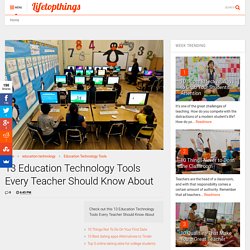
Here, we’ve compiled a list of 13 Education Technology Tools that should be part of any teacher’s tech tool arsenal, whether for their own personal use or as educational aids in the classroom. This site has many of the same features as Facebook and Twitter but is designed specifically for education. It lets students share resources, hold online discussions, get grades, and basically just learn together.
Naomi's Blog - Job Interview Tips For Teachers - Point Production and Design. Congratulations…you have landed an interview for your dream teaching job.
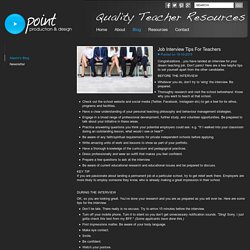
Don’t panic! Here are a few helpful tips to set yourself apart from the other candidates. Whatever you do, don’t try to ‘wing’ the interview. Be prepared.Thoroughly research and visit the school beforehand. Know why you want to teach at that school.Check out the school website and social media (Twitter, Facebook, Instagram etc) to get a feel for its ethos, programs and facilities.Have a clear understanding of your personal teaching philosophy and behaviour management strategies.Engage in a broad range of professional development, further study, and volunteer opportunities. KEY TIPIf you are passionate about landing a permanent job at a particular school, try to get relief work there. OK, so you are looking great.
Don’t be late. You survived the interview. Write a thank you note or email to the Principal. Alternatives to Free Time at the End of Class. My first year of teaching, I would often end my lesson, check for understanding, have students fill out an exit ticket, review the homework assignment, breathe a sigh of relief, glance up at the clock, and develop immediate diarrhea upon realizing that I had a whole 10 minutes of class left.

You see, I walk this weird, confusing line of being a teacher who hates giving students “free time” but also hates giving students busy work, so it was really hard for me to figure out what to do on the spot.